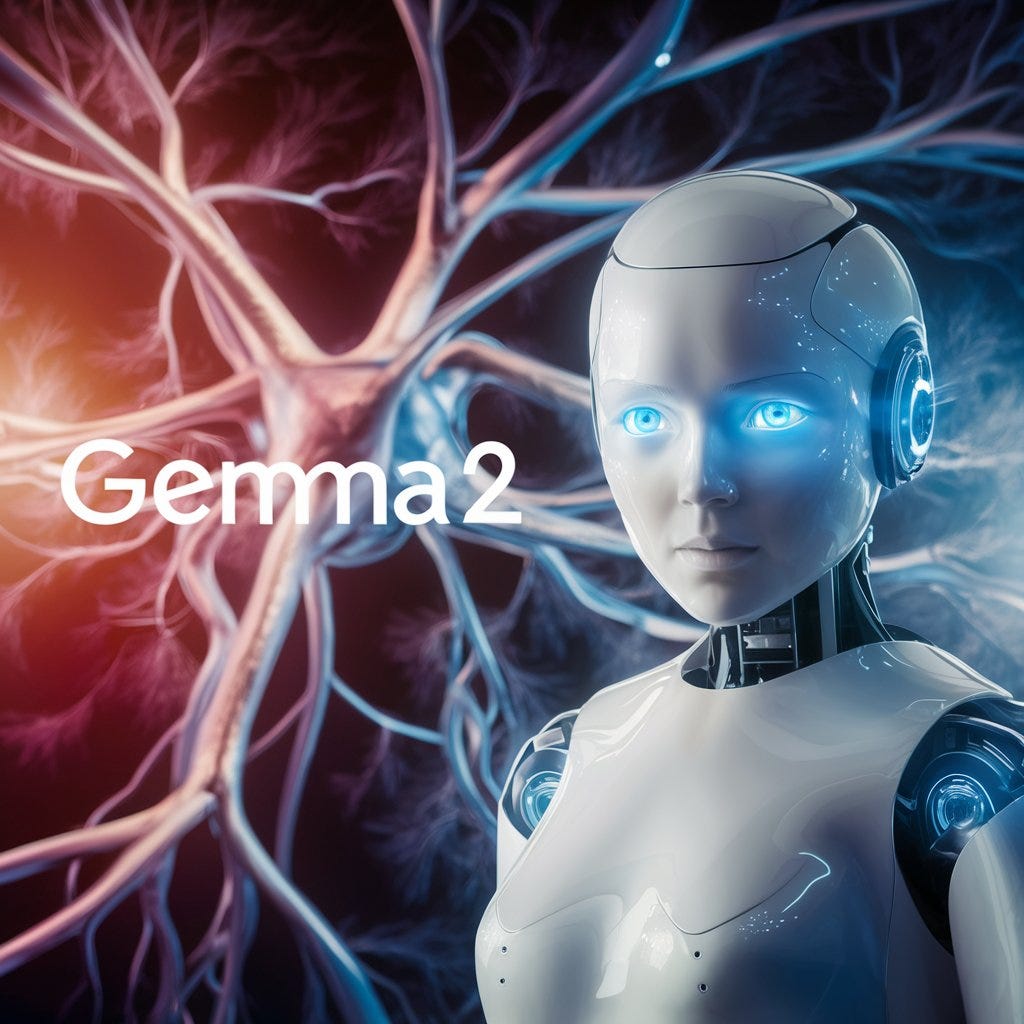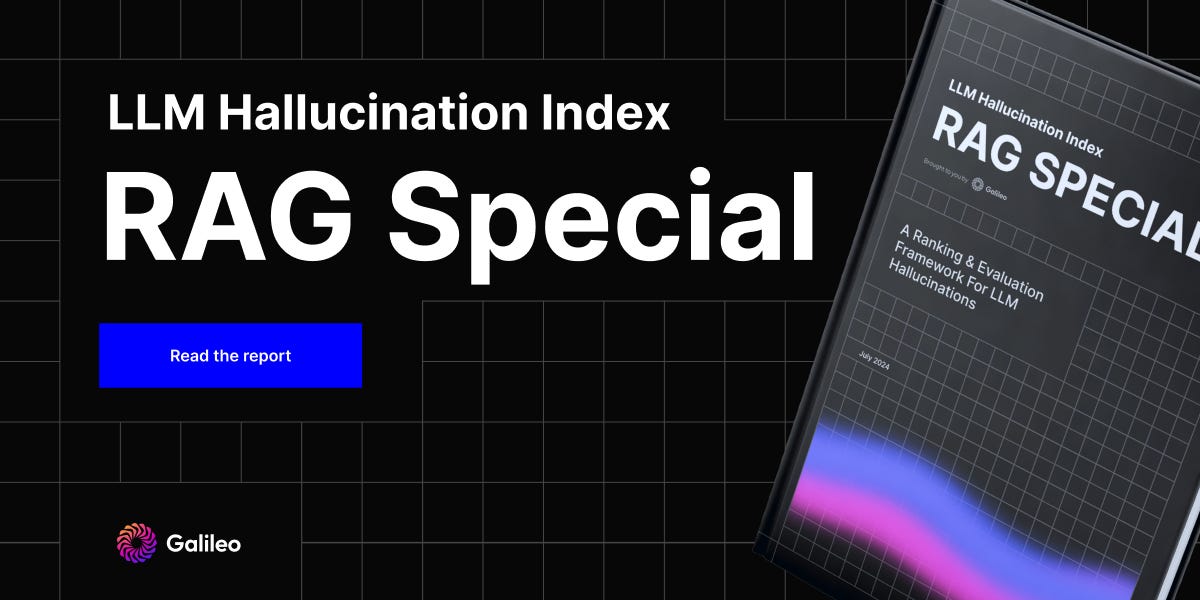TheSequence - Gemma 2: A Release That Matters
Was this email forwarded to you? Sign up here Next Week in The Sequence:
You can subscribe to The Sequence below:📝 Editorial: Gemma 2: A Release That MattersSmall language models (SLMs) are gaining a lot of momentum in both research and product releases. SLMs have the potential to streamline the adoption of generative AI and unlock use cases such as on-device AI. Most of the SLM releases from the past year have been limited to the models themselves, and that’s hardly enough. Adopting SLMs (just like larger models) comes with significant challenges. Interpretability and security certainly rank at the top of the list. Last week, Google took a major step in addressing some of these challenges with a new release of its Gemma stack. In June, Google announced the release of Gemma 2, a series of mid-size models with 9 billion and 27 billion parameters, respectively. A few days ago, Google extended that release with some exciting additions:
The Gemma release is significant because it is open source. This should encourage researchers and developers to expand on these capabilities, particularly in the case of Gemma Scope, given that interpretability is such a challenge in generative AI applications. I have been tinkering with Gemma Scope over the past few days, and it’s pretty useful. With this release, it seems that Gemma is evolving from a family of models to complete stacks to enable SLM adoption in real-world applications. This release definitely matters. What’s the best model for RAG? Our latest LLM Hallucination Index ranks 22 of the leading models on their performance across 3 different RAG tasks, evaluating the correctness of their responses and propensity to hallucinate. See which model comes out on top and why larger is not always better…" 🔎 ML ResearchGemma 2Google DeepMind published a paper detailing Gemma 2, a new set of small models ranging from 2 to 27 billion parameters. Gemma 2 extends its predecessors with new techniques such as interleaving local-global attentions and group query attention —> Read more. SAM 2Meta AI published a paper introducing the second version of its Segment Anything Model(SAM) for real time object segmentation. SAM expands over its predecesors by providing an unified model for object segmentation in videos and images —> Read more. TraceMicrosoft Research published a paper and open source code of Trace, a framework for AI systems optimization. Trace is a new AutoDiff like tool but can be used in systems without gradients —> Read more. CMU-MATHCarnegie Mellon University researchers published details about CMU-MATH, a model that took second place in the AI mathematical olympiad. CMU-MATH uses a dual model system that which includes a policy model that produces multiple solutions and a reward model that chooses the answer with the highest weight —> Read more. MoMaMeta AI publishd a paper introducing MoMa, a mixture-of-experts architecture for mixed model models. MoMa is based on the Chameleon architecture and processes images and text in arbitrary sequences —> Read more. Berkeley HumanoidAI researchers from UC Berkeley published a paper introducing Berkeley Humanoid, a research framework for learning based control. The framework includes a robot designed to learn algorithm with low simulation complexity —> Read more. 🤖 AI Tech ReleasesGemma 2Google open sourced new additions to its Gemma models including a 2B parameter model, a guardrail framework and an interpretability tool —> Read more. torchchatThe PyTorch team released torchchat, a library for accelerated inference in laptop, mobile and desktop devices —> Read more. Stable Fast 3DStability AI open sourced Stable Fast 3D, a model for rapid 3D asset generation —> Read more. 🛠 Real World AIAgents in the EnterpriseSalesforce shares some perspectives about the impact of AI agents in enterprise automation tasks —> Read more. 📡AI Radar
You’re on the free list for TheSequence Scope and TheSequence Chat. For the full experience, become a paying subscriber to TheSequence Edge. Trusted by thousands of subscribers from the leading AI labs and universities. |
Older messages
Gemma 2: A Release That Matters
Sunday, August 4, 2024
A new model, a guardrails framework and an interpretability tool. ͏ ͏ ͏ ͏ ͏ ͏ ͏ ͏ ͏ ͏ ͏ ͏ ͏ ͏ ͏ ͏ ͏ ͏ ͏ ͏ ͏ ͏ ͏ ͏ ͏ ͏ ͏ ͏ ͏ ͏ ͏ ͏ ͏ ͏ ͏ ͏ ͏ ͏ ͏ ͏ ͏ ͏ ͏ ͏ ͏ ͏ ͏ ͏ ͏ ͏ ͏ ͏ ͏ ͏ ͏ ͏ ͏ ͏ ͏ ͏ ͏ ͏ ͏ ͏ ͏ ͏ ͏ ͏
📽 [Webinar] Beat GPT-4 with a Small Model and 10 Rows of Data*
Friday, August 2, 2024
Small language models (SLMs) are increasingly rivaling the performance of large foundation models like GPT-4. ͏ ͏ ͏ ͏ ͏ ͏ ͏ ͏ ͏ ͏ ͏ ͏ ͏ ͏ ͏ ͏ ͏ ͏ ͏ ͏ ͏ ͏ ͏ ͏ ͏ ͏ ͏ ͏ ͏ ͏ ͏ ͏ ͏ ͏ ͏ ͏ ͏ ͏ ͏ ͏ ͏ ͏ ͏ ͏ ͏ ͏
Edge 418: Meet The New DSPy: The Hot Framework to Build LLM Apps You Should Know About
Thursday, August 1, 2024
Created by Stanford researchers, the framework provides an interesting alternative to LangChain or LlamaIndex. ͏ ͏ ͏ ͏ ͏ ͏ ͏ ͏ ͏ ͏ ͏ ͏ ͏ ͏ ͏ ͏ ͏ ͏ ͏ ͏ ͏ ͏ ͏ ͏ ͏ ͏ ͏ ͏ ͏ ͏ ͏ ͏ ͏ ͏ ͏ ͏ ͏ ͏ ͏ ͏ ͏ ͏ ͏ ͏ ͏
Edge 417: Building Multi Agent Systems
Tuesday, July 30, 2024
Can multiple agents collaborate in a single application? Some research and technologies that might help with that. ͏ ͏ ͏ ͏ ͏ ͏ ͏ ͏ ͏ ͏ ͏ ͏ ͏ ͏ ͏ ͏ ͏ ͏ ͏ ͏ ͏ ͏ ͏ ͏ ͏ ͏ ͏ ͏ ͏ ͏ ͏ ͏ ͏ ͏ ͏ ͏ ͏ ͏ ͏ ͏ ͏ ͏ ͏
3 vs. 3: The Open vs. Closed Battle for Big AI
Sunday, July 28, 2024
Big model announcements by Meta, Mistral and xAI. ͏ ͏ ͏ ͏ ͏ ͏ ͏ ͏ ͏ ͏ ͏ ͏ ͏ ͏ ͏ ͏ ͏ ͏ ͏ ͏ ͏ ͏ ͏ ͏ ͏ ͏ ͏ ͏ ͏ ͏ ͏ ͏ ͏ ͏ ͏ ͏ ͏ ͏ ͏ ͏ ͏ ͏ ͏ ͏ ͏ ͏ ͏ ͏ ͏ ͏ ͏ ͏ ͏ ͏ ͏ ͏ ͏ ͏ ͏ ͏ ͏ ͏ ͏ ͏ ͏ ͏ ͏ ͏ ͏ ͏ ͏ ͏ ͏ ͏ ͏ ͏
You Might Also Like
Import AI 399: 1,000 samples to make a reasoning model; DeepSeek proliferation; Apple's self-driving car simulator
Friday, February 14, 2025
What came before the golem? ͏ ͏ ͏ ͏ ͏ ͏ ͏ ͏ ͏ ͏ ͏ ͏ ͏ ͏ ͏ ͏ ͏ ͏ ͏ ͏ ͏ ͏ ͏ ͏ ͏ ͏ ͏ ͏ ͏ ͏ ͏ ͏ ͏ ͏ ͏ ͏ ͏ ͏ ͏ ͏ ͏ ͏ ͏ ͏ ͏ ͏ ͏ ͏ ͏ ͏ ͏ ͏ ͏ ͏ ͏ ͏ ͏ ͏ ͏ ͏ ͏ ͏ ͏ ͏ ͏ ͏ ͏ ͏ ͏ ͏ ͏ ͏ ͏ ͏ ͏ ͏ ͏ ͏ ͏ ͏ ͏ ͏ ͏ ͏ ͏ ͏ ͏
Defining Your Paranoia Level: Navigating Change Without the Overkill
Friday, February 14, 2025
We've all been there: trying to learn something new, only to find our old habits holding us back. We discussed today how our gut feelings about solving problems can sometimes be our own worst enemy
5 ways AI can help with taxes 🪄
Friday, February 14, 2025
Remotely control an iPhone; 💸 50+ early Presidents' Day deals -- ZDNET ZDNET Tech Today - US February 10, 2025 5 ways AI can help you with your taxes (and what not to use it for) 5 ways AI can help
Recurring Automations + Secret Updates
Friday, February 14, 2025
Smarter automations, better templates, and hidden updates to explore 👀 ͏ ͏ ͏ ͏ ͏ ͏ ͏ ͏ ͏ ͏ ͏ ͏ ͏ ͏ ͏ ͏ ͏ ͏ ͏ ͏ ͏ ͏ ͏ ͏ ͏ ͏ ͏ ͏ ͏ ͏ ͏ ͏ ͏ ͏ ͏ ͏ ͏ ͏ ͏ ͏ ͏ ͏ ͏ ͏ ͏ ͏ ͏ ͏ ͏ ͏ ͏ ͏ ͏ ͏ ͏ ͏ ͏ ͏ ͏ ͏ ͏ ͏ ͏ ͏ ͏
The First Provable AI-Proof Game: Introducing Butterfly Wings 4
Friday, February 14, 2025
Top Tech Content sent at Noon! Boost Your Article on HackerNoon for $159.99! Read this email in your browser How are you, @newsletterest1? undefined The Market Today #01 Instagram (Meta) 714.52 -0.32%
GCP Newsletter #437
Friday, February 14, 2025
Welcome to issue #437 February 10th, 2025 News BigQuery Cloud Marketplace Official Blog Partners BigQuery datasets now available on Google Cloud Marketplace - Google Cloud Marketplace now offers
Charted | The 1%'s Share of U.S. Wealth Over Time (1989-2024) 💰
Friday, February 14, 2025
Discover how the share of US wealth held by the top 1% has evolved from 1989 to 2024 in this infographic. View Online | Subscribe | Download Our App Download our app to see thousands of new charts from
The Great Social Media Diaspora & Tapestry is here
Friday, February 14, 2025
Apple introduces new app called 'Apple Invites', The Iconfactory launches Tapestry, beyond the traditional portfolio, and more in this week's issue of Creativerly. Creativerly The Great
Daily Coding Problem: Problem #1689 [Medium]
Friday, February 14, 2025
Daily Coding Problem Good morning! Here's your coding interview problem for today. This problem was asked by Google. Given a linked list, sort it in O(n log n) time and constant space. For example,
📧 Stop Conflating CQRS and MediatR
Friday, February 14, 2025
Stop Conflating CQRS and MediatR Read on: my website / Read time: 4 minutes The .NET Weekly is brought to you by: Step right up to the Generative AI Use Cases Repository! See how MongoDB powers your



